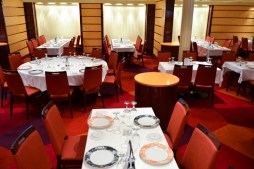The Ultimate Guide: How to Organize a Private Dining Experience
Are you looking to elevate your dining experience and create an unforgettable event? Organizing a private dining experience can be the perfect solution. Whether it’s for a special occasion, a corporate gathering, or simply a desire to enjoy an intimate meal with friends and family, hosting a private dining event allows you to curate every aspect of the evening. In this ultimate guide, we will walk you through the steps of organizing a private dining experience that will leave your guests impressed and satisfied.
Choosing the Right Venue
The first step in organizing a private dining experience is selecting the perfect venue. Consider factors such as ambiance, location, capacity, and menu options. Look for venues that offer private dining rooms or spaces that can be exclusively reserved for your event. It’s essential to visit potential venues in person to get a sense of their atmosphere and suitability for your specific needs.

When choosing a venue, think about the type of event you are hosting. Are you looking for an elegant fine-dining experience or something more casual and relaxed? The venue should align with the theme of your event and cater to your desired ambiance.
Customizing Your Menu
One of the highlights of organizing a private dining experience is having control over the menu selection. Collaborate with professional chefs or catering services to create a customized menu that reflects your taste preferences and dietary requirements.
Consider offering multiple courses that showcase various flavors and culinary techniques. Incorporate seasonal ingredients into your menu to ensure freshness and uniqueness. If possible, provide options for guests with dietary restrictions or allergies.
To enhance the overall experience, consider incorporating interactive elements such as live cooking stations or food pairing suggestions from sommeliers or mixologists. These additions will not only elevate the dining experience but also engage your guests throughout the evening.
Attention to Detail
To make your private dining experience truly memorable, pay attention to the finer details. From table settings to lighting and decor, every element contributes to the overall ambiance of the event.
Invest in high-quality tableware and linens that complement your chosen theme or color scheme. Use candles or dimmed lighting to create an intimate atmosphere. Consider adding personalized touches such as name cards or customized menus for each guest.
Additionally, think about the flow of the evening. Plan out a timeline that allows for a seamless transition between courses and any additional activities you may have planned. Ensure that your guests feel well taken care of by having attentive staff available to assist throughout the event.
Marketing and Promotion
To ensure a successful private dining experience, it’s crucial to effectively market and promote your event. Start by creating eye-catching invitations or digital flyers that capture the essence of what guests can expect from the evening.
Utilize social media platforms and email marketing campaigns to reach your target audience. Consider collaborating with influencers or local media outlets for additional exposure. Highlight any unique aspects of your private dining experience, such as special guest chefs or exclusive menu items.
Encourage guests to share their experiences on social media by creating a dedicated hashtag for your event. This will not only generate buzz but also provide you with user-generated content that can be shared across platforms.
In conclusion, organizing a private dining experience requires careful planning and attention to detail. By choosing the right venue, customizing your menu, paying attention to details, and effectively marketing your event, you can create an unforgettable dining experience for yourself and your guests. So go ahead – start planning today and prepare for an extraordinary culinary journey.
This text was generated using a large language model, and select text has been reviewed and moderated for purposes such as readability.


